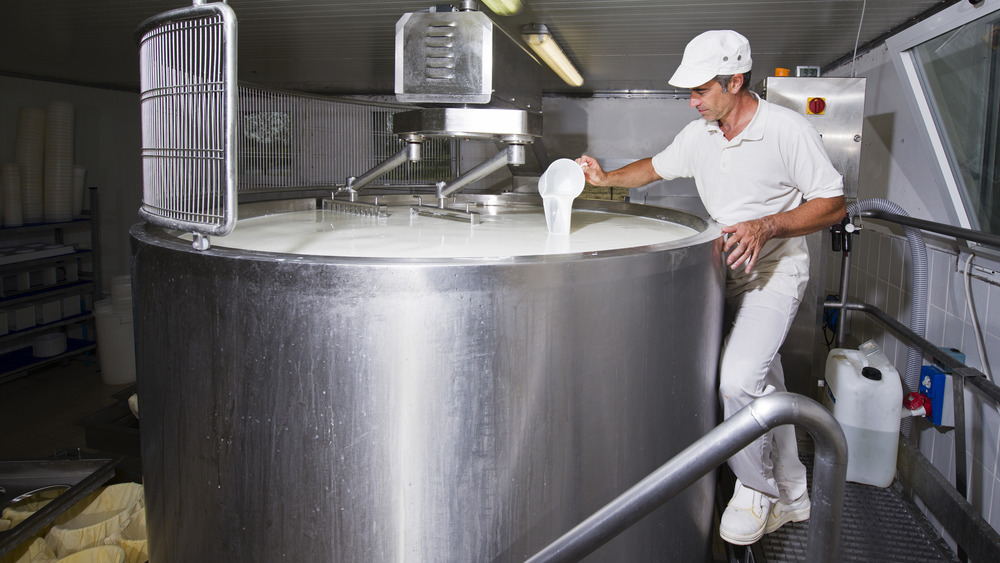What Is Rennet And Why Do We Use It?
From buttery Brie to pungent Roquefort to a perfectly aged Parmigiano-Reggiano, the variety of cheeses on the market is truly astounding — and cheese lovers are snatching up a whole lot of it. According to Fortune Business Insights, the global cheese market was worth a staggering 118.36 billion USD in 2019, and that number is projected to continue growing in the years to come.
While there are a lot of differences between types of cheese, there's one particular element of the cheesemaking process that the vast majority have in common — the inclusion of rennet. Rennet is an enzyme used in the cheesemaking process that separates the solid particles in the milk from the water content (via The Spruce Eats), sometimes colloquially referred to as the curds and the whey (via Shelburne Farms).
The inclusion of the enzyme is responsible for helping the cheese to solidify and take its shape, and the curds can then be aged or processed to create the type of cheese desired (via Cello Cheese). While it's not a requirement for all cheese — as MasterClass explains, some soft cheeses such as paneer don't require a rennet to solidify — it's found in most cheeses.
Where does it come from?
Most rennet is found in the stomach lining of ruminants, a grouping of herbivorous mammals with multiple stomachs that includes goats, calves, and lambs (via The Spruce Eats). Animal-sourced rennet sets a bit faster, which adds an element of convenience, and it is generally the recommendation for any cheese that will be aged for six months or longer, according to Traditional Cooking School.
Vegetarians who are okay with consuming dairy, but remain squeamish about an ingredient that comes from animals' stomach lining, have another option. The Spruce Eats explains that a form of rennet can also be found in plants, including artichokes, nettles, and cardoon thistle. Some cheeses in Portugal and Spain are traditionally crafted using plant-based rennet (via The Spruce Eats), such as Azeitão (via Delishably), and many producers are trying their hand at products using vegetable rennet.
Anyone looking to craft cheese at home can find rennet tablets or liquid rennet on the market (via Cultures For Health), and the simplicity of the ingredients that go into cheese means it's not too pricey an error if the recipe doesn't quite turn out. For example, crafting a pound of creamy homemade mozzarella requires just water, a sprinkle of salt, a gallon of milk, and a pinch of citric acid and rennet to get things shaping up (via Kitchn). Seriously, that's it.
So, if you're a huge cheese lover, rennet deserves a place in your kitchen.

